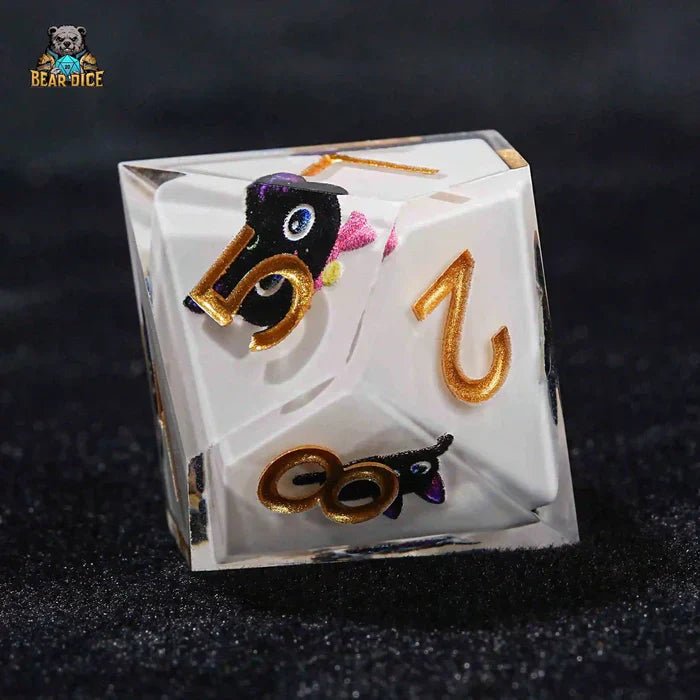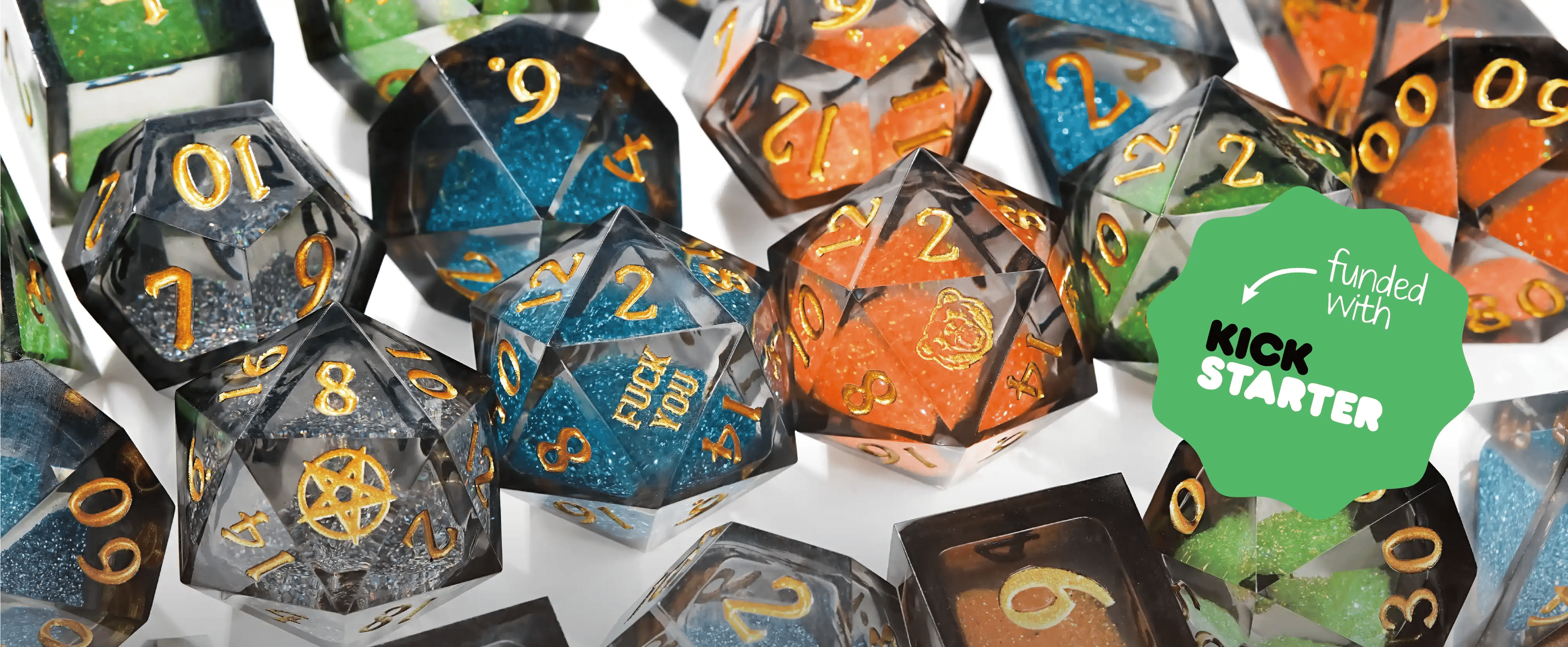Table of contents
📖 How old is the oldest d20?
The oldest 20-sided dice in the world is currently known to date back to the 2nd century BC, about 2,200 years ago. This dice was unearthed near Alexandria, Egypt. It is made of ivory and has the shape of a regular icosahedron. This dice is now in the Metropolitan Museum of Art.

The oldest D20 dice: a 20-sided dice with ancient Greek letters
Ancient Greek letters are engraved on each face, indicating that it is not only a game prop, but also likely to be used for divination, mathematical exercises, and even educational purposes. Archaeologists speculate that this dice may belong to ancient Greek or Roman culture, reflecting the ancients' understanding of geometry and exploration of randomness.
In addition, the British Museum also has a 20-sided dice made of rock crystal, dating from about the 1st to 2nd century AD, unearthed in Egypt during the Roman Empire.
🔍 What is the origin of the d20 dice: more than just a toy
1. Ancient Greece and the mathematical aesthetics of regular polyhedrons
In ancient Greece, famous mathematicians such as Pythagoras and Plato were interested in geometric figures, especially regular polyhedrons. In his works, Plato corresponded the five regular polyhedrons to the five elements (fire, wind, water, earth, and ether), among which:
The icosahedron is regarded as the embodiment of the "water element";
It symbolizes flow and change, which just fits the "unpredictability" characteristics of the dice.
Although there is no clear evidence that the Greeks used 20-sided dice for entertainment, their knowledge of geometry had a profound impact on the shape of the dice later.
2. Academic and gaming traditions in Arabia and India
📌 Arab civilization
In the medieval Arab world, mathematics and astronomy were highly developed. Some documents record that Arab scholars would use polyhedral models to: simulate celestial observations; numerical probability tests; "fate metaphors" in education or philosophy.
Although these models may not be "dice" in the strict sense, their construction and purpose are highly similar.
📌Ancient Indian gaming culture
India is one of the origins of "dice games (Pachisi, Chaupar)". Although the mainstream is still 4-sided dice or 6-sided dice, in some religious or divination rituals, dice with higher sides may also be used for "Sanskrit number simulation" or complex decision-making demonstrations.
📌Practical dice and entertainment activities in the Roman period
In the ancient Roman era, dice became a widely used gambling tool, not limited to the 6-sided dice form. Archaeological discoveries show that there are dice with 14, 16 or even 20 sides (some are marked with Arabic numerals or Latin letters); materials include bone, ivory, bronze and even glass; they may be used for "oracle decisions" in religious ceremonies, or philosophical games between nobles.
It can be said that D20 has long jumped out of the category of "game tools" and is the crystallization of human wisdom in exploring the unknown and randomness.
🕰 D20 dice evolution timeline
From ancient Roman ivory carvings to modern tabletop games, what changes has D20 undergone? Let's use the timeline to quickly travel through this dice legend.
| Era | Historical node |
|---|---|
| 2nd century BC | Ancient Roman ivory D20 dice came out |
| 16th century | Multi-sided dice gradually became popular in European gambling and divination games |
| 1960s | 20-sided models for mathematics and probability teaching began to be mass-produced |
| 1974 | "Dungeons & Dragons" incorporated D20 into the core mechanism |
| 1990s | High-quality resin and metal D20 dice debuted, and a collection craze emerged |
| 2010s | Personalized and customized D20 dice became a symbol of player status and were widely used in the TRPG community |
🧱 Material transformation: D20 dice evolved from ivory to metal 、resin
Early D20 dice were mostly made of ivory, bone, bronze and pottery. These materials were both strong and easy to carve, and were usually used for divination or ritual occasions, but due to process limitations, they were scarce.
After entering the 20th century, with the industrialization of board games, the D20 material ushered in a qualitative leap. Initially, it was plastic, which was light, easy to mold, and low-cost, and was widely used in TTRPG games such as DND. Subsequently, more innovations emerged: highly transparent resin was used to create a crystal-like appearance; metal D20 dice became a favorite of collectors for its heavy feel and impact sound effects; there were even custom dice embedded with dried flowers, gold foil, miniature sculptures, quicksand and other inclusions, engraved fonts, and printed pattern logos, making D20 a practical and displayable work of art.
🎲 The rise of D20 in modern board games
The 20-sided dice (D20 dice) really entered the public eye with the birth of Dungeons & Dragons (DND) in 1974. This game, co-created by Gary Gygax and Dave Arneson, is the world's first true tabletop role-playing game (TTRPG).
In DND, D20 is not an ordinary tool, but a core mechanism that determines the fate of the character. Almost all key actions - attack hits, skill checks, life and death judgments - are determined by rolling a D20. This mechanism was later called the "D20 system".
The influence of the D20 dice spread rapidly and became the most representative dice in TRPG; many systems such as Pathfinder, Starfinder, Mutants & Masterminds also inherited the D20 mechanism;
Players also began to collect and customize D20, such as metal D20 dice, unique rotating D20 dice, resin D20 dice, etc.
🔢 Why 20 sides?
The answer is actually very simple - the design of the 20-sided dice is derived from a perfectly symmetrical geometric body: the regular icosahedron.
The regular icosahedron is one of the five Platonic solids, consisting of 20 completely equal regular triangles. Each face, edge and angle is symmetrical, ensuring that the probability of each face appearing is exactly the same, which is the key to the "fairness" of the dice.
Platonic solids are considered to represent the basic elements of the universe, and the regular icosahedron symbolizes "water" and change, echoing fate and the unknown.
In contrast, 18 or 22 faces cannot form a perfectly symmetrical regular polyhedron, which will lead to uneven probability, center of gravity offset or irregular rotation, and are not suitable for use as standard dice.
🧩Summary: The past and present life and fantasy evolution of D20 dice
A small D20 dice carries not only a "fate check", but also the wisdom of civilization spanning thousands of years. From ancient Egyptian ivory craftsmanship to the creative aesthetics of modern metal and resin, it is not only the core prop of the game, but also a microcosm of mathematics and mysticism.




